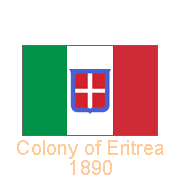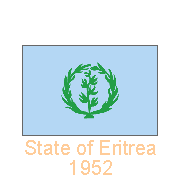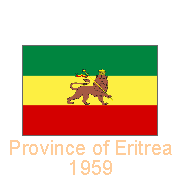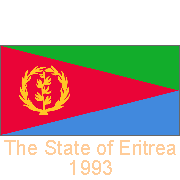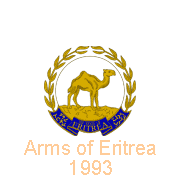Flags from Eritrea

A Flag history of Eritrea
On 1 January 1890, Eritrea, invaded and occupied by Italy during the “scramble for Africa”, was officially declared an Italian colony. Its flag became the royal Italian tricolour, charged with arms of the House of Savoy. In 1936 it became a province of Italian East Africa (Eritrea, Ethiopia, and Italian Somaliland) until Italy’s defeat in 1941. It was then temporarily administered by Britain until 1952 when, under a United Nations mandate, Eritrea federated with Ethiopia under an arrangement in which Eritrea retained control over its local affairs.
you may then send it as a postcard if you wish.
An Eritrean flag with a “UN blue” field and a green emblem depicting an olive wreath and a single branch was adopted and used until 1959 when the territory was absorbed and then forcibly annexed by Ethiopia in 1962. The flag of the Ethiopian Empire was the only legal flag from there on, and after Emperor Haile Selassie’s overthrow in 1974, it was the republican Ethiopian flag.
However, the blue and green Eritrean flag continued to be used as a “flag of liberation” until 1993, when the country finally achieved true independence. The flag of independent Eritrea, official since 24 May 1993, is a combination of the blue flag of 1952 and that of the Liberation Movement EPLF (Eritrea People’s Liberation Front), green over light blue, divided with a large red triangle extending from the hoist to the fly, and charged with a large yellow star. Red stands for the blood spilt during the struggle for independence, blue for the wealth of the sea, while green symbolises agriculture. The olive wreath presumably symbolises peace and the role the UN played in securing freedom.


